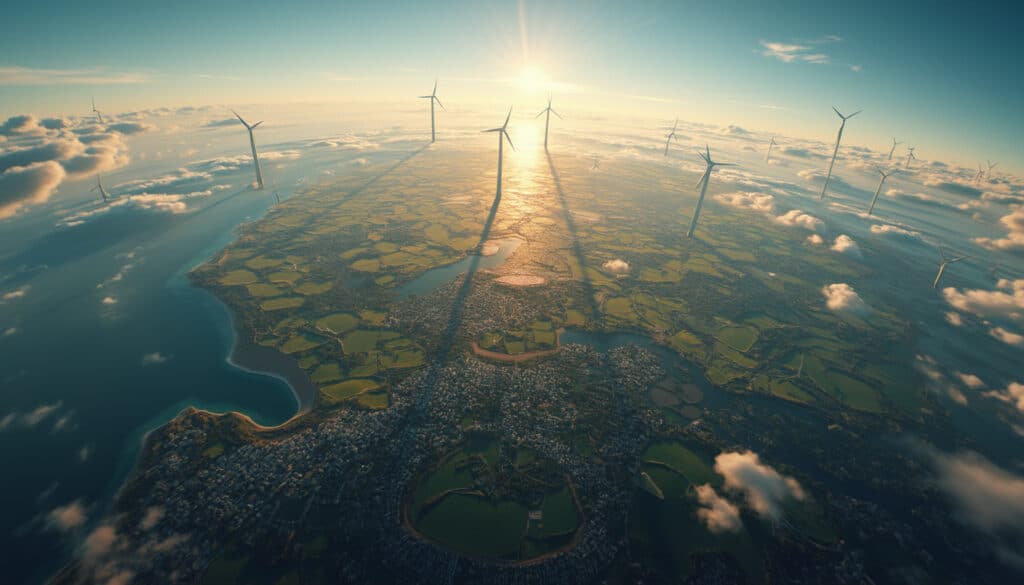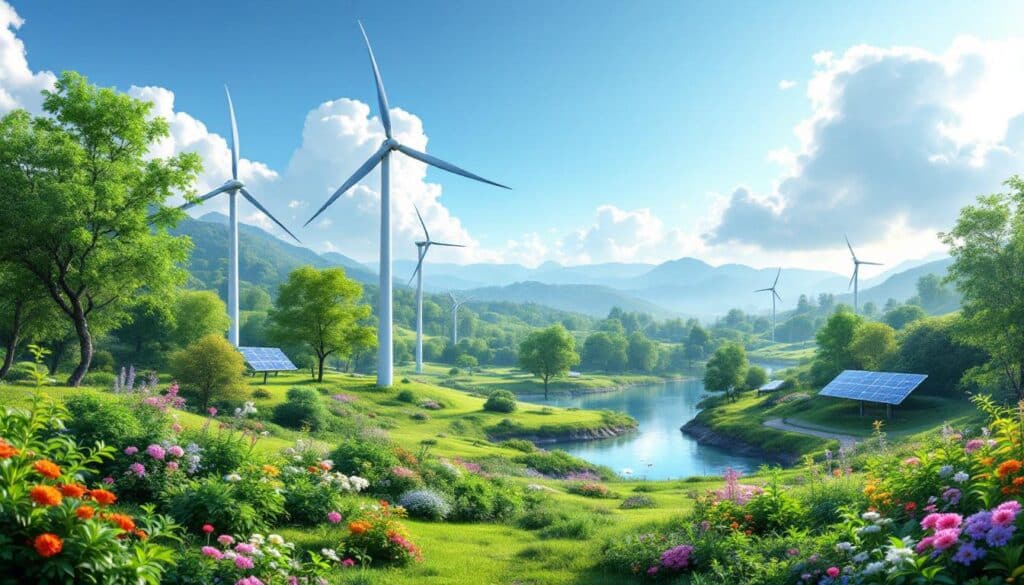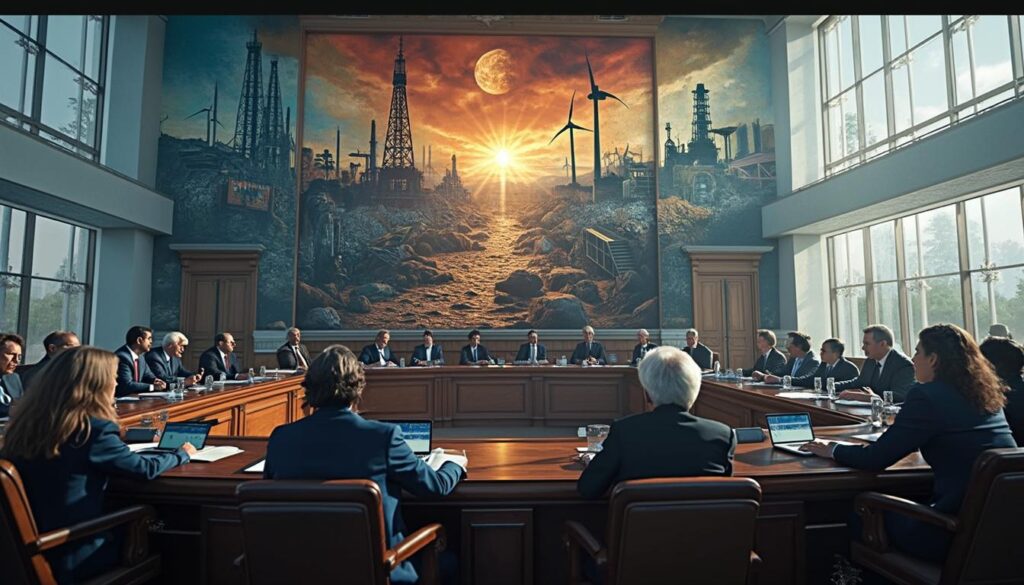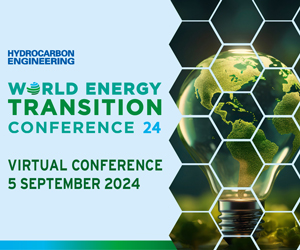On the dawn of an energy revolution, renewable energies are establishing themselves as the pillars of our sustainable future. Faced with climate change, they offer a glimmer of hope to reduce our carbon footprint. Technological advancements are accelerating the transition to cleaner energy sources.
Global initiatives, backed by record investments, demonstrate a massive commitment to a green future. The European Union, with its ambitious goal of 32% renewables by 2030, is pushing the boundaries of innovation. Photovoltaic solar energy, in particular, is experiencing exponential growth, becoming a key player in the energy mix. This dynamic promises to radically transform how we consume energy.
Why are clean energies gaining ground in the global energy landscape?
Faced with climate change and the greenhouse effect, renewable energies are positioned as essential solutions. Unlike fossil fuels, they emit significantly less CO₂, thus contributing to the reduction of greenhouse gas emissions. The Energy Outlook 2023 report from the IEA highlights a rapidly changing global energy context, with a growing place for clean energies, particularly photovoltaic solar energy.
Investments in renewable energies are significantly increasing, supported by ambitious policies and a heightened awareness of environmental issues. For example, the European Union aims for 32% of its energy mix to come from renewable sources by 2030, thereby strengthening its role as a global leader in this field.
This dynamic is also fueled by technological advancements that make clean energies more competitive and accessible. The rapid growth of installed capacities, particularly in solar and wind, is a testament to this positive evolution. Additionally, innovation in energy storage helps to address the intermittency of renewable sources, ensuring a stable and reliable energy supply.
What are the most promising types of renewable energies currently?
Renewable energies come in several categories, each with specific advantages. Solar and wind remain the most dynamic, with exponential growth in global installations. Photovoltaic solar energy, in particular, benefits from a continuous decrease in costs, making this technology increasingly accessible.
Hydropower constitutes a mature and reliable energy source, though its expansion is limited by geographical and environmental constraints. Geothermal energy is also gaining importance, as evidenced by the launch of the construction of a geothermal plant in Kenya by China, as part of the African momentum towards renewable energies.
Biomass and biofuels represent another facet of renewable energies, offering solutions for the management of organic waste and the production of bioenergy. These technologies allow for the transformation of waste into renewable energy, thereby contributing to a circular and sustainable economy.
How do international policies influence the development of clean energies?
International policies play a crucial role in the development of renewable energies. The European Union, for example, has established ambitious targets to integrate more renewable sources into its energy mix. These initiatives are supported by subsidies, tax incentives, and regulations favorable to innovation and the deployment of clean technologies.
Moreover, international agreements such as the Paris Agreement strengthen global cooperation for the energy transition. These agreements encourage countries to commit firmly to reducing their CO₂ emissions and to invest massively in renewable infrastructure. This international coordination is essential to achieve global climate goals and ensure a fair and effective energy transition.
Local initiatives complement these efforts, such as the project in Germany, which achieved 62.7% renewable energies in its electricity mix in 2024, with a significant share of solar energy. These national successes demonstrate the positive impact of well-designed policies and political will in the development of clean energies.
What technological innovations are driving the growth of renewable energies?
The rise of renewable energies is closely linked to technological advancements. Innovations in photovoltaic solar energy have increased the efficiency of solar panels while reducing their production costs. New technologies such as bifacial solar cells and solar tracking systems optimize the capture of solar energy, thereby increasing electricity production.
In the field of wind energy, larger and more efficient turbines allow for more energy capture even at low wind speeds. The integration of advanced control technologies and artificial intelligence optimizes the management of wind farms, thereby maximizing their performance and reliability.
Innovations in energy storage
Energy storage is a key element in ensuring the reliability of renewable energies. Advances in battery technologies, such as lithium-ion batteries and flow batteries, offer more efficient and durable storage solutions. These innovations allow for the storage of surplus energy produced during periods of high output and to release it when demand is high, thereby ensuring continuity of supply.
Additionally, the development of hydrogen storage technologies opens new perspectives for flexibility and decentralization of electrical grids. Green hydrogen, produced from renewable sources, can be used as a clean energy vector, thereby integrating renewable energies into various sectors such as industry and transportation.
What are the current challenges and prospects for the future of clean energies?
Despite remarkable progress, the transition to renewable energies still faces several challenges. One of the main obstacles is the need to increase investments in renewable infrastructure. According to the IEA, global investments in clean energies need to triple by 2030 to achieve carbon neutrality. A report from the International Energy Agency indicates that these investments should reach $4.5 trillion per year.
The development of distribution and transmission networks is also crucial for effectively integrating renewable energies into the overall energy system. Current infrastructures need to be modernized to handle the flexibility and intermittency of renewable sources, thereby ensuring a stable and reliable energy supply.
Overcoming challenges related to energy storage and resource management remains a priority. Improving storage technologies and implementing smart energy management systems are essential to optimize the use of renewable energies and ensure their long-term viability.
Fortunately, the energy transition seems to be continuing despite obstacles. As Ed Miliband states, the transition to renewable energies is irreversible. This conviction is supported by concrete actions and massive investments in the renewable sector, ensuring a cleaner and more sustainable future.
What examples illustrate the success of the global energy transition?
Various initiatives around the world testify to the success of the transition to renewable energies. For example, Texas has transformed into a pioneer of renewable energies despite its rich oil tradition. This transition demonstrates that even regions traditionally dependent on fossil fuels can adopt clean and sustainable solutions.
Another notable example is that of a Danish investor who raised €12 billion for a fund dedicated to renewable energies. This massive investment underscores the growing interest of private capital in sustainable projects and the increasing importance of the renewable sector in financial markets.
In Africa, China has launched the construction of a geothermal plant in Kenya, thereby enhancing the continent’s energy capacities and promoting sustainable economic development. These initiatives demonstrate the positive impact of international collaborations and investments in clean technologies.
How are economic actors adapting to the energy transition?
Businesses and investors play a crucial role in promoting renewable energies. In response to the growing demand for clean energy solutions, many companies are investing in the research and development of innovative technologies. For example, a Danish company successfully raised €12 billion for a fund dedicated to renewable energies, illustrating the private sector’s commitment to this transition.
Moreover, financial markets are increasingly recognizing the value of green investments. Stocks related to renewable energies have seen a surge in investor interest, despite some fluctuations due to political or economic factors. This trend reflects a growing confidence in the long-term potential of clean energies.
Governments are also encouraging this movement by offering tax incentives and subsidies for environmentally friendly projects. These measures facilitate the transition of businesses to more sustainable practices while stimulating innovation and competitiveness in the renewable sector.
What is the future of renewable energies in the global context?
The future of renewable energies looks promising, despite current challenges. Growth prospects are high, with projections anticipating a continuous increase in installed capacities over the coming decades. The IEA report emphasizes the importance of a rapid and sustained transition to meet global climate goals and ensure a sustainable and resilient energy supply.
Technological innovations will continue to play a decisive role, making clean energies even more efficient and competitive. At the same time, global commitment to carbon neutrality and international cooperation efforts will strengthen the resilience of energy systems in the face of environmental challenges.
In conclusion, the rise of clean energies is an unavoidable reality that is transforming the global energy landscape. Thanks to technological advancements, political support, and the commitment of economic actors, the transition towards a more sustainable and environmentally friendly future is underway. This positive dynamic promises a cleaner and more resilient energy world for future generations.
Articles similaires
Thank you!
We will contact you soon.














